As one year ends and a new one begins, our adventure van goes into hibernation.
In December, once the holiday season gets under way, we typically top off fuel and water tanks, slot Next Chapter into its parking place at my partner Leslie’s house in Ventura, and hook its umbilical lines to an extension cord plugged into an outlet in the garage: a shore power cable to keep the cabin battery system topped off, electronic rodent repellants under the hood to discourage orchard rats from moving in, a trickle charger for the van’s starter battery. Then we tuck it away beneath a waterproof cover and try not to feel like it resents being banished from the open road.
And while Next Chapter sleeps, Leslie and I dream.
January and February are not great for the kind of outdoor adventures we enjoy most. The daylight hours are painfully short, and weather conditions are, on average, frequently inclement in much of the West. But they are a great time to plan trips for the rest of the year, and we have been working steadily at that.
So far, we have multi-week expeditions planned for March (exploring the new Chuckwalla National Monument in the Southern California desert), April (visiting archaeological wonders and several indigenous pueblos in Arizona and New Mexico), May (exploring backcountry Utah before and after a six-day rafting trip on the Green River), July-August (a tour of New England and the Canadian maritime provinces), and September (autumn high-country visits to the Wind River Range in Wyoming, the Uintas in Utah and the Ruby Mountains in Nevada, with a side trip to Yellowstone).
We’re still thinking about what to do with June and October. I’m sure we’ll come up with something.
But while Next Chapter hibernates, we still find opportunities for travel. My birthday falls during the first week of January, and in recent years it has become tradition for Leslie and I to observe the dawning of a new year and my personal temporal milestone with a road trip. These midwinter adventures do not typically involve our camper van, primitive roads, ancient indigenous rock art, stunning geology and campfires under the stars in remote, unpeopled landscapes. More commonly, they are downright civilized and undertaken via passenger car.
Last year, for example, the early days of 2024 found us in a lodge surrounded by the magnificence of Sequoia National Park, in the winter season when the great trees are at their most beautiful owing to the vivid contrast between the ruddy glow of their bark and the blanket of snow lapping at their ankles. Another year found us staying in the lodge in Death Valley National Park, where we rented a Jeep to tackle the brutal unpaved road to the playa known as the Racetrack, peppered with boulders that etch trails in the lakebed as they skate mysteriously before the wind. Twice we have celebrated my birthday in New Mexico with visits to Taos Pueblo, one of the oldest inhabited communities in North America, to witness its residents performing their sacred Buffalo Dance, an evocative ritual that erases centuries as it unfolds.
This year, we journeyed to the landscape of my childhood in Northern California. It was an altogether enjoyable outing, and although it lacked the novel and awe-inspiring elements of some previous January adventures, the trip once again taught us the value in seeking out rich new experiences on well-trodden ground.
City by the Bay
From Ventura we headed north on Highway 101, the familiar route that saunters along the azure coast, jogs inland at Gaviota Pass and then glides between the oak-studded hills of Santa Barbara County, which were optimistically beginning to fuzz with green despite the lack of winter rain. Valley after valley followed, the 101 linking their rural communities together like beads on a string: Santa Maria, San Luis Obispo, Paso Robles, Gilroy. The highway then carves its way through Silicon Valley and the southern Bay Area, one-time rural landscapes themselves, now a congestion of freeways and a claustrophobia of densely packed urban development. The traffic thickens as you approach San Jose and does not relent as you travel north until you are well on the other side of the Golden Gate.
We had rented an Airbnb in what’s known as the Outer Richmond district of The City (the way we provincial natives of the Bay Area commonly refer to San Francisco, as if there were no other California city worthy of similar capitalized distinction). We rolled into the hilly metropolis after dark, and found our apartment on a quintessentially San Franciscan street, so vertiginous that residents and visitors are compelled to park vehicles perpendicular to the curb to keep them in place.
Our rental was a couple blocks from the Pacific at Ocean Beach. San Francisco may be most famously the City by the Bay, but on the west it borders the sea, and the breakers come rolling onto the broad strand there across thousands of miles of open ocean. I was born in San Francisco, lived there the first 5 years of my life, and have visited countless times since, but I had never spent any real time in that neighborhood; in nearly all my visits to the city as an adult I have remained comfortably in the visitor-friendly quadrant roughly encompassing Union Square, Market Street, the Embarcadero and North Beach.
The beach at Ocean Beach is an anomaly along the generally craggy and cliff-girt Pacific shoreline of the San Francisco Peninsula and the Marin Headlands to the north: It is broad, flat, thickly carpeted with fine golden sand, and so expansive and level that it can and does host dozens of beach volleyball courts.
That sand accumulation is the result of the transport by the Sacramento and San Joaquin river systems of vast amounts of sediment, eroded from the plains, slopes and peaks of interior California, into San Francisco Bay. Receding tides and persistent river currents move the finest sediments through the bay and out through the Golden Gate strait, where they are picked up and distributed down the coast by longshore ocean currents. When those Ocean Beach volleyball players dive to the sand to dig out a volley, they arise bedecked with glittering crumbs of Mother Load chert and Sierra Nevada granite.
We had no interest in playing volleyball. But our apartment was also just a couple blocks from the western end of Golden Gate Park, a thousand-acre rectilinear oasis of towering trees, ponds, meadows, gardens, trails and cultural attractions in the heart of the city. We picked up the park’s trail network and walked more than two miles east to the de Young Museum, where we spent the afternoon examining the exhibits. Just before closing time, we walked back to our apartment under glowing streetlights in the dimming light of evening.
The next day, under blue skies and sunshine, we hiked to Land’s End in the Golden Gate National Recreation Area. Other than scenery, there is not much there today — a small National Park Service visitor center, the long-shuttered Cliff House restaurant — but in the late 19th and early 20th centuries Ocean Beach and the Land’s End headlands were home to a vast amusement complex built by Adolph Sutro, a German immigrant and engineer who made his fortune in the Comstock Lode silver mines in Nevada. The flat ground inland from the beach, now covered by the Outer Richmond and Ocean Beach districts, was mostly an expansive dune field then, while the beach itself and the oceanfront slopes overlooking it hosted an enormous hotel, a Ferris wheel, arcades and other entertainment facilities, including the Sutro Baths, a gigantic glass-enclosed swimming pool complex.
Today it’s a great place to hike and take in the sights, which include a panoramic view of the Golden Gate Bridge from the ocean side that otherwise can only be enjoyed from a boat. So that’s what we did.
Following our excursion into San Francisco’s past, we returned to Golden Gate Park and again walked the length of it, this time to visit the California Academy of Sciences, a neighbor of the de Young Museum. It includes a planetarium, aquarium and natural history museum, and on the afternoon of our visit it was jammed with families, many of them hauling kids and their accompanying supplies and accessories in overgrown strollers roughly the size of Volkswagen beetles.
Despite the crowding, we enjoyed the educational visit and stayed until the staff kicked us out at closing time. We then capped our sojourn in San Francisco by walking from the science center to a charming French bistro in the Inner Richmond neighborhood, just a mile or so away, where we met my sister Stephanie and her husband Sean for a terrific meal that included engaging conversation with the restaurant’s gregarious head chef and co-owner. If you make a list of must-do activities for your next visit to that famously food-centric city, be sure something like that is on it.
Land of wine, geysers and memories
The next morning we headed across the city and north up the 101 again, crossing the Golden Gate Bridge, cruising through Marin and heading for the town of Healdsburg, a vibrant feature of the Sonoma County landscape where I grew up. Our immediate destination was one of our favorite wineries in that area, Unti, a small operation in the Dry Creek Valley that grows and vints an unusual assortment of Italian varietals (unusual for California, anyway). We had the tasting room nearly to ourselves, so were able to enjoy a relaxed conversation with our server about the stories behind the wines we were sipping and the grapes from which they were pressed.
From the Dry Creek Valley we followed back roads east through the Alexander and Knights valleys, transiting a landscape of rolling hills framing many square miles of vineyards. In spring and summer this would be a panorama of lush greenery, in autumn a display of vivid reds and golds to rival the leaf-peeper displays of New England and the Eastern Sierra. But in the deep of winter the dormant vines were naked, the vistas stark, the valleys quiet as the land slumbered.
Squeezing through a narrow cleft in the Mayacamas Mountains, the highway led us to our destination on the outskirts of Calistoga, where we had an Airbnb for two nights. A small town at the far northern end of the famed Napa Valley, Calistoga first achieved notoriety in the 1860s, after a businessman and speculator from the East Coast, Samuel Brannan, heard about the locally famous hot springs and bought up thousands of acres surrounding them, using the fortune he had made as a merchant catering to miners during the California gold rush. He envisioned creating a “Saratoga Springs of California,” referring to the resort town in upstate New York known for its mineral baths and hot springs. He created the portmanteau name “Calistoga” for it, and sold off town lots to finance construction of a resort and hotel catering to the needs of well-to-do San Franciscans on holiday. Although he was in many ways a troubling figure in California history, his name continues to adorn buildings, businesses and menu items all over town.
Many of those establishments are spa resorts, still tapping the geothermal features that attracted Brannan’s attention more than 150 years ago, and on a cold winter morning clouds of steam rise from the downtown business district, giving it a slightly otherworldly flavor. Calistoga even has its own Old Faithful Geyser, a privately owned commercial attraction, one of few such features in the world that erupt at more or less predictable intervals. The hot springs throughout the area are a lingering expression of the volcanism that helped shape the landscape of the northern Napa Valley, including Mount St. Helena, the most prominent peak of the Mayacamas range.
Besides serving as a reminder of what the entire Napa Valley was like before industrial-scale vineyard and winery development transformed most of it several decades ago, relatively sleepy Calistoga also plays an important role in my family’s history. My mom and her family moved there from Fort Bragg on the Northern California coast when she was in elementary school. She eventually graduated from Calistoga High School and enrolled at Santa Rosa Junior College, a 20-mile drive over the mountains on a tortuous narrow road. She met my Dad at SRJC while she was still living with her folks, and they were married at Our Lady of Perpetual Help Catholic Church in Calistoga in 1957 before moving to San Francisco to begin their new life together and start a family. They wasted no time; I was born 11 months later.
Although my grandfather died in 1962, my grandmother continued to live in Calistoga throughout my childhood, as did Mom’s sisters Barbara and Carol and their families. After my family moved from San Francisco when I was 5 to a ranch outside of Santa Rosa, much closer to Calistoga, we made regular trips to visit them over the same winding road that had led Mom to Dad when she was 18. I remember it mostly as a catalyst for motion sickness and as a disagreeable summertime portal from the relative cool of our ranch on the coastal side of the Mayacamas to the inferno of the inland valley, where temperatures were routinely 10-20 degrees hotter. But there were also Thanksgiving gatherings and Fourth of July fireworks displays to recall with fondness, from a time that seems so very distant now.
On our January visit, with these memories swirling around in my mind, we skipped the mud baths, mineral springs and geyser-heated hot tubs in favor of a hike. A few miles down the road, roughly midway between Calistoga and St. Helena, Bothe-Napa Valley State Park preserves a mixed forest of coast redwoods, madrones and Douglas firs, and is the answer to the trivia question “Where is the most-inland grove of state-protected redwoods in California?”
We explored that forest on our final afternoon in the Napa Valley, finding the blessed sense of peace and rejuvenation that always attends a saunter through big old trees along a clear-running creek.
Lights in the darkness
It’s a long drive from the North Bay Area to Ventura, and although we have made it in one long push in the past, we decided to split it in two this time. We have the luxury of a more leisurely pace now that we are retired, with few calendared obligations, and we no longer have the stamina or the willingness to spend 9 or more hours on the freeway in a single day. So we booked a hotel in Paso Robles for our final night of this road trip.
Paso is a small town with farming and ranching roots, lately invigorated by a robust wine industry that has sprouted from the surrounding hills of San Luis Obispo County. At its heart is a classic downtown square: a grassy municipal park summer-shaded by tall trees, fronted on three sides by blocks of small shops and restaurants in historic buildings.
Our hotel was just off the square, and after dinner at a nearby restaurant we detoured to the park to enjoy its elaborate Christmas light display, for which Paso is regionally famous. Only a day or two from being taken down and packed away for another year, the decorations turned the cold and dark of a midwinter night into a cheery oasis of childhood wonder.
It was a welcome refuge from the growing atmosphere of adult anxiety, fear and anger that the early days of 2025 had already ushered in. Next Chapter Notes is not explicitly about politics, but federal, state and local policy decisions shape the present and future of the landscapes, communities and cultures we encounter on our travels. It is thus impossible to ignore the potential implications of the new presidential administration, busily placing institutional vandals and looters in key positions at the agencies that manage federal lands, for the integrity of the wild places we love. Like so many people I know, I’m apprehensive about what the coming months and years will bring, and as our new-year road trip drew to an end, I wished that the sense of peace and wonder we found during it might persist.
In search of that, we will continue to explore our grand national landscape and its expansive public domain, the shared heritage of all Americans. As we do, we will cling hopefully to the essential objectives we have set for all our trips: to embrace opportunities to learn new things, to seek natural beauty, to spend time among trees and streams and wild creatures, to converse with strangers, and to keep our ears open for the stories embedded in both familiar and unfamiliar places.
And we will always look for lights in the darkness.





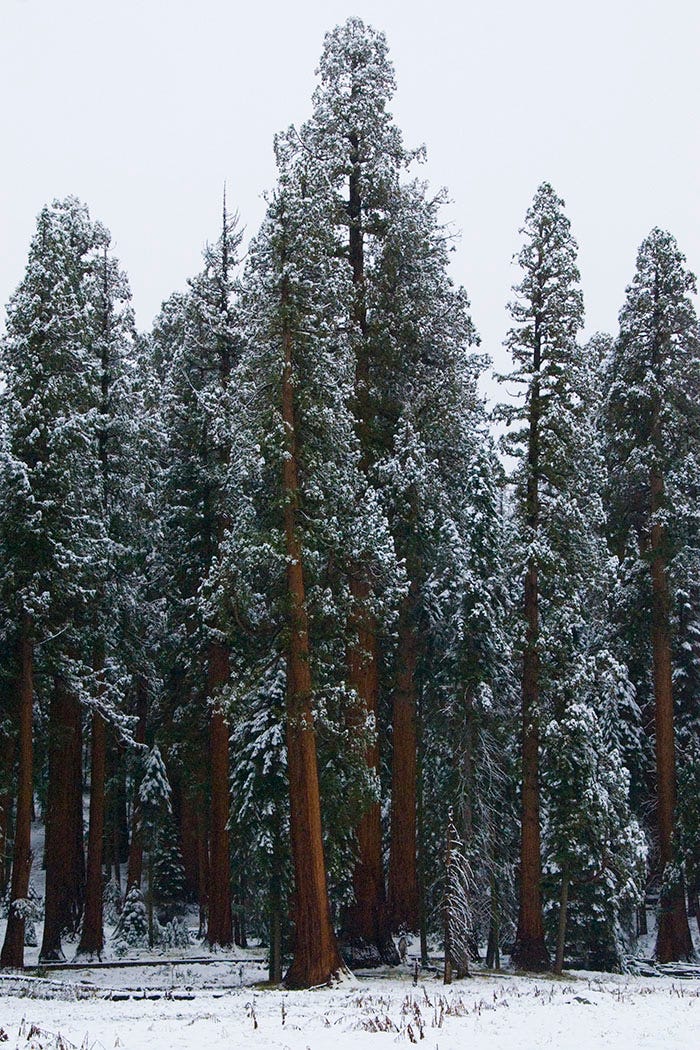
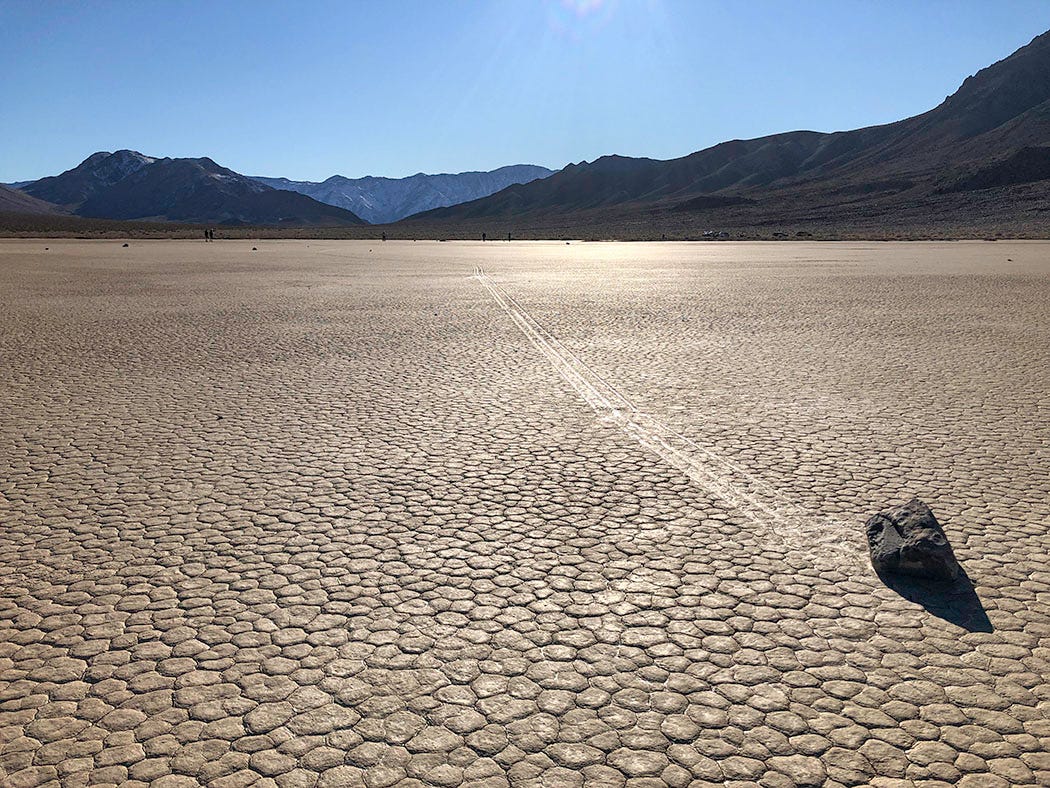
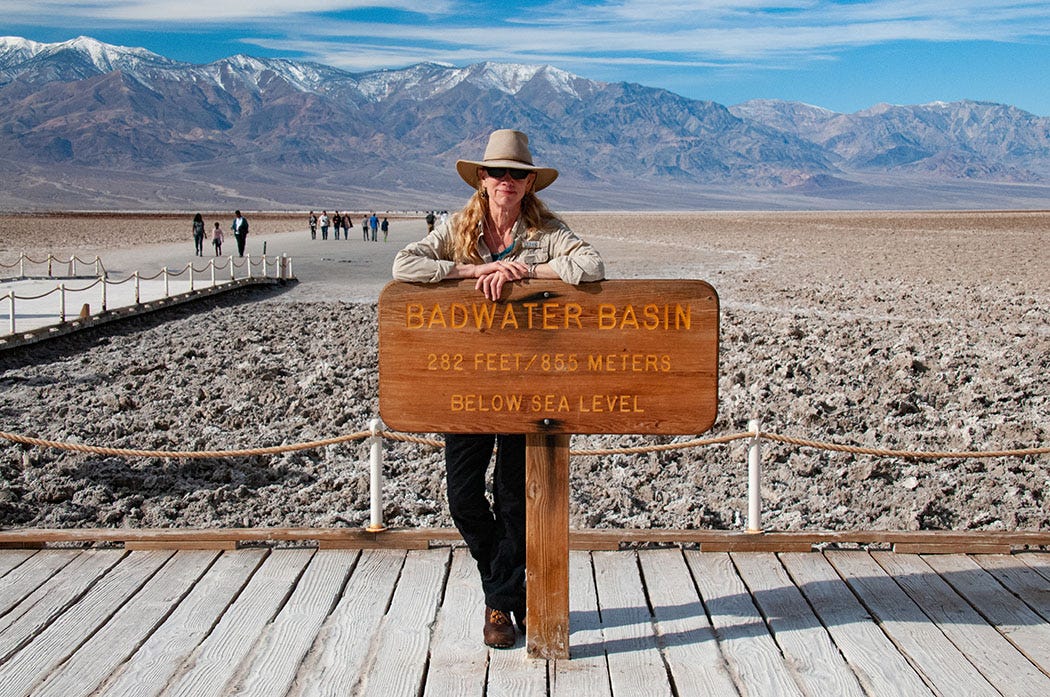


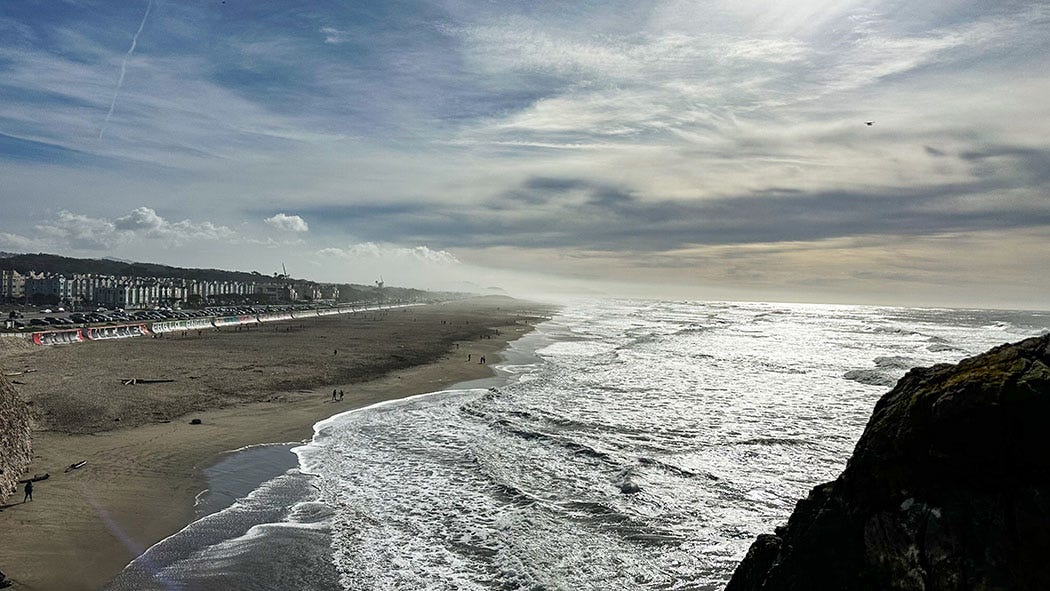
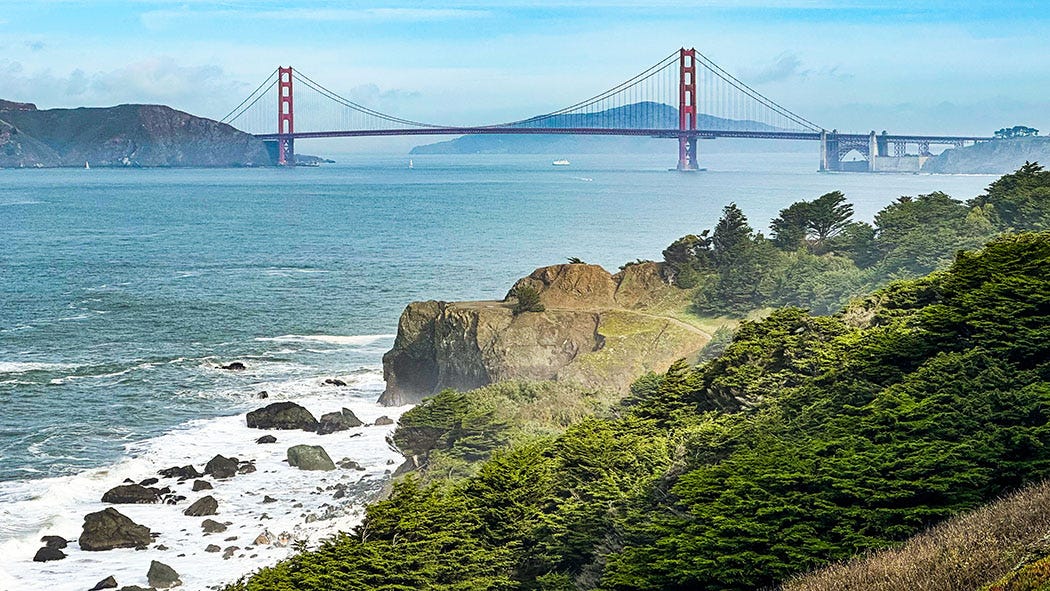
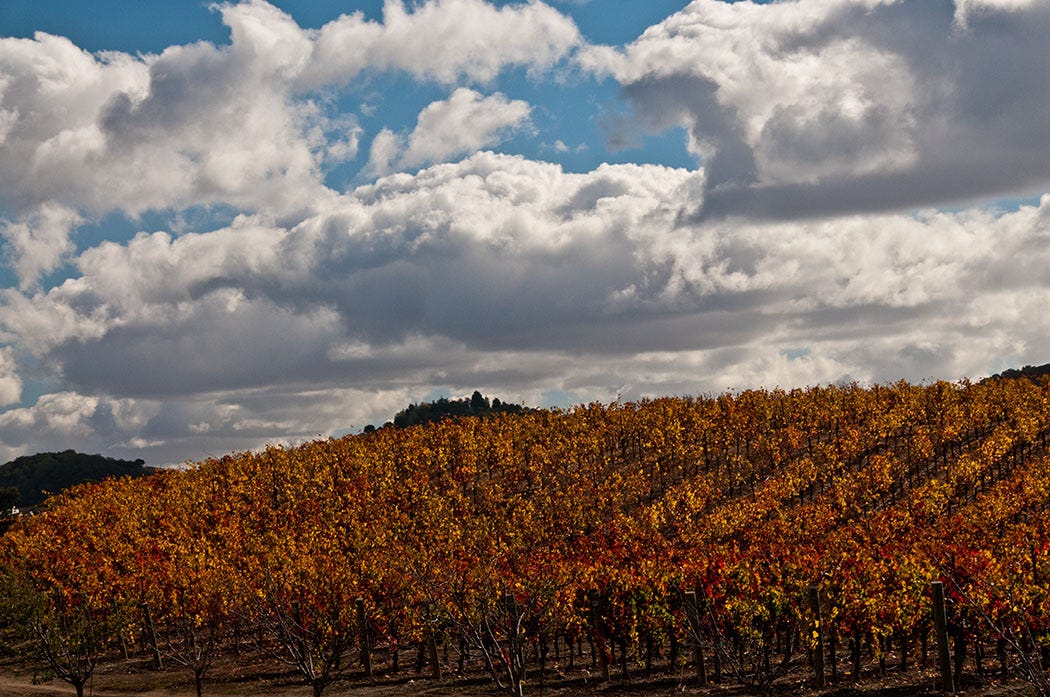

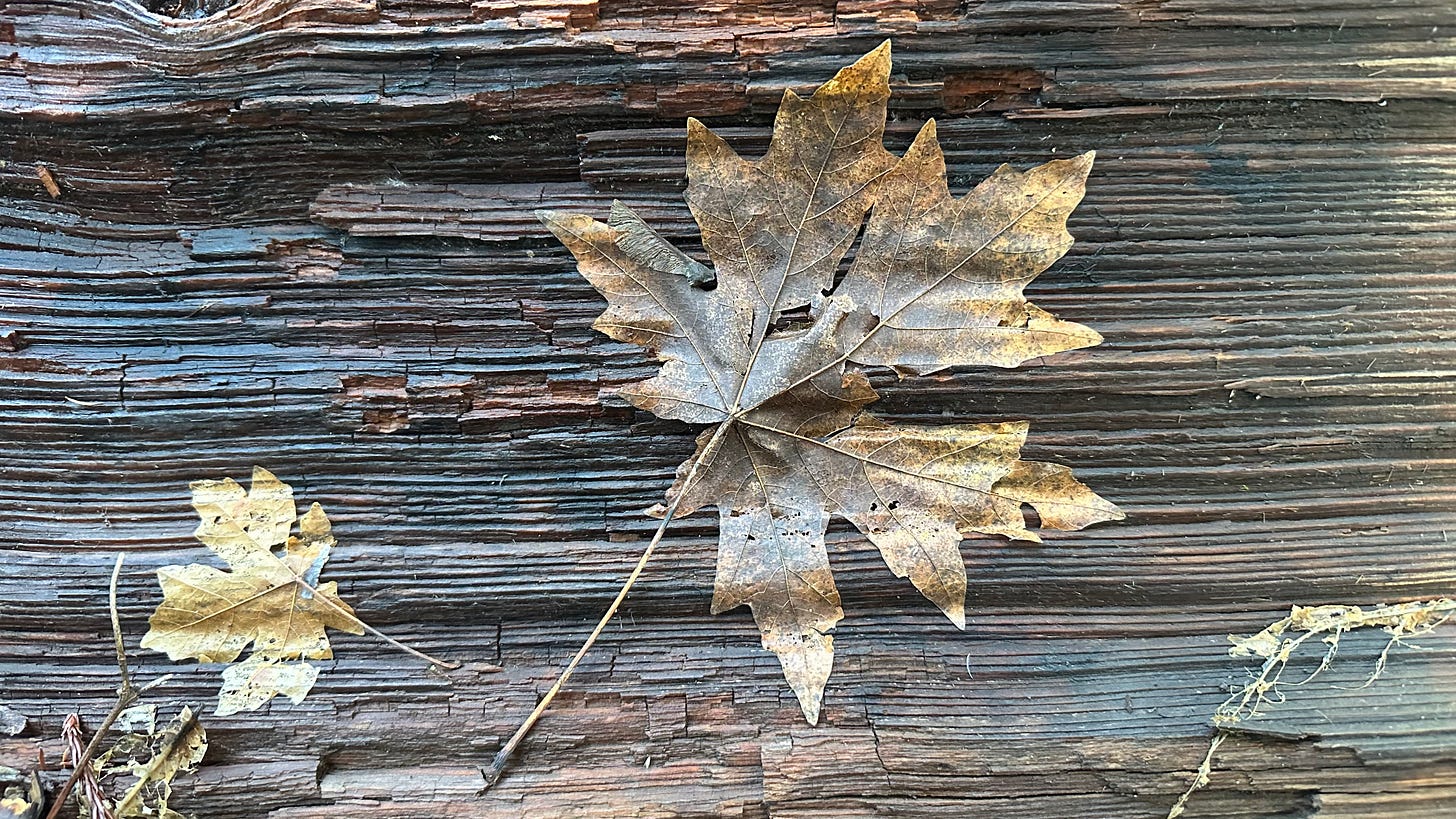
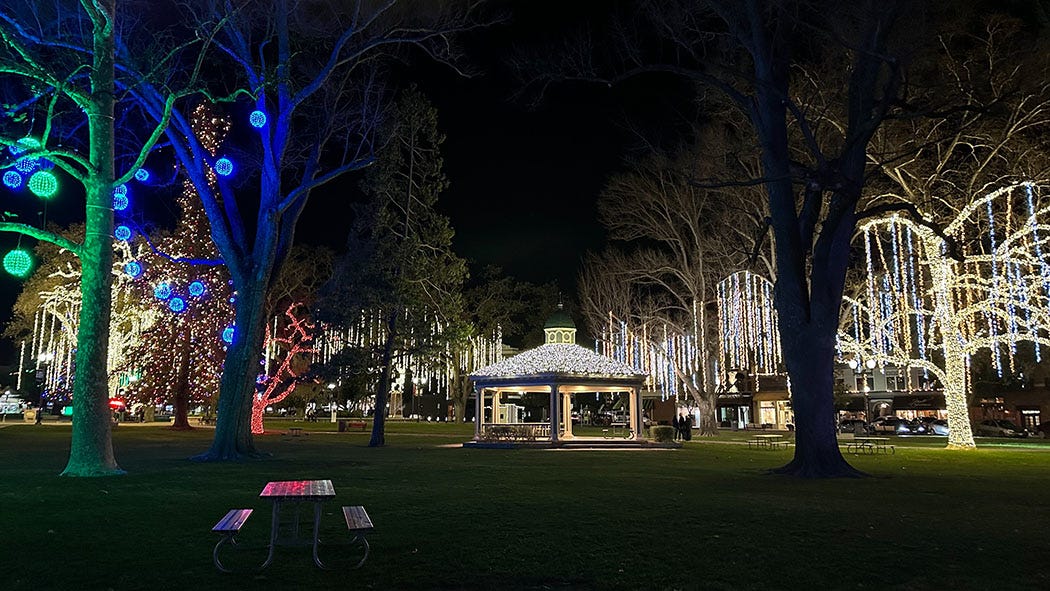

Ahh John another great story about your trip and fantastic photos as well. Every year I do a girls trip with my best friend and her two grown daughters. The year after Covid, where we didn't go anywhere we decided to stay a little closer to home instead of flying. We chose Calistoga, where we had an AirBnB, and then Carmel by the Sea. We hiked in the Bothe-Napa Valley State Park and loved it. It was nice to learn from you some of the specifics about the park and Calistoga. Thanks again for sharing your journeys and knowledge with us. Alright I'm waiting for when you guys go on your next trip. Like Next Chapter or motorhome is parked at the ranch, covered, plugged in and yep mouse deterrents everywhere.
Another great story - thank you, John.